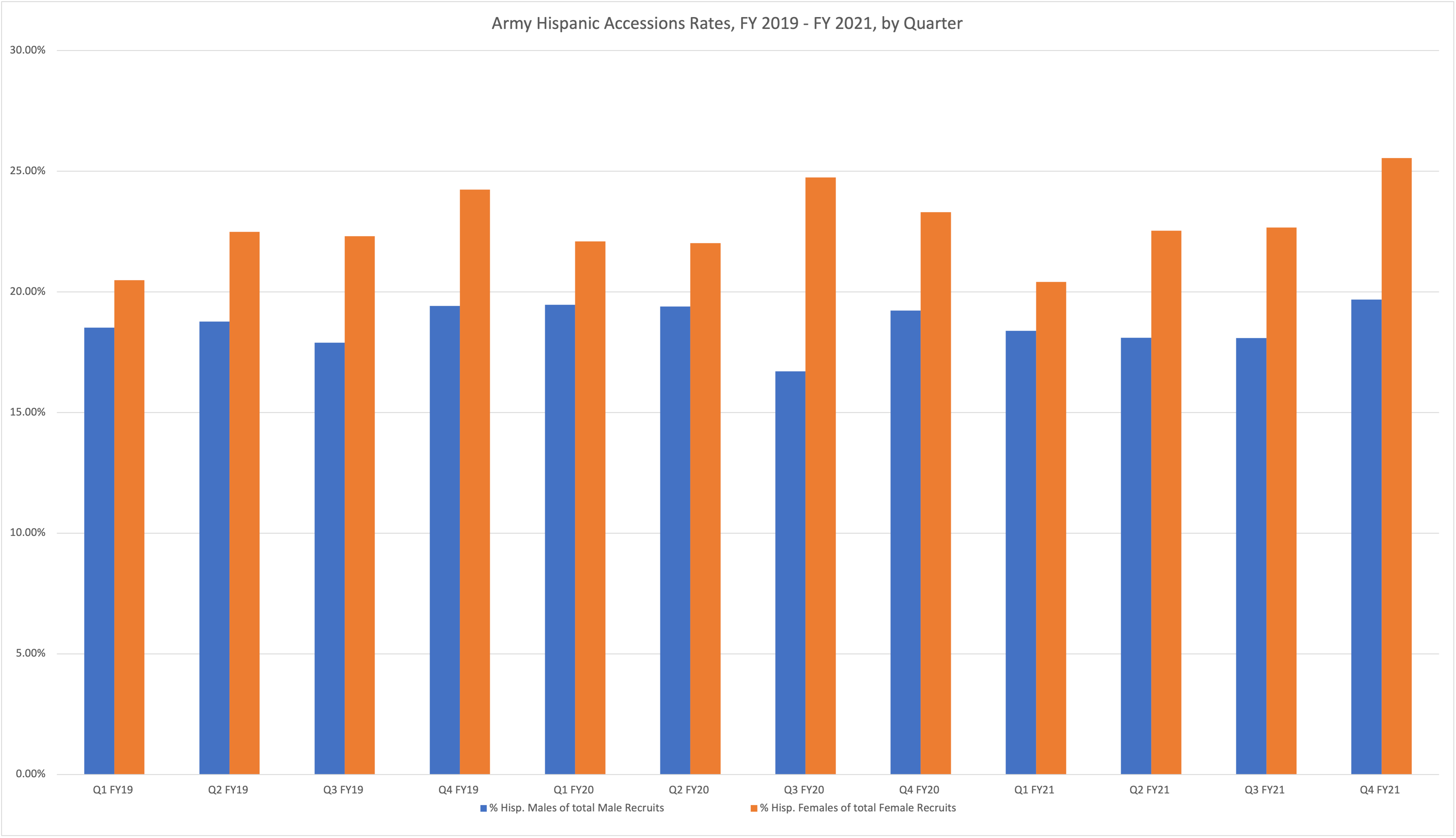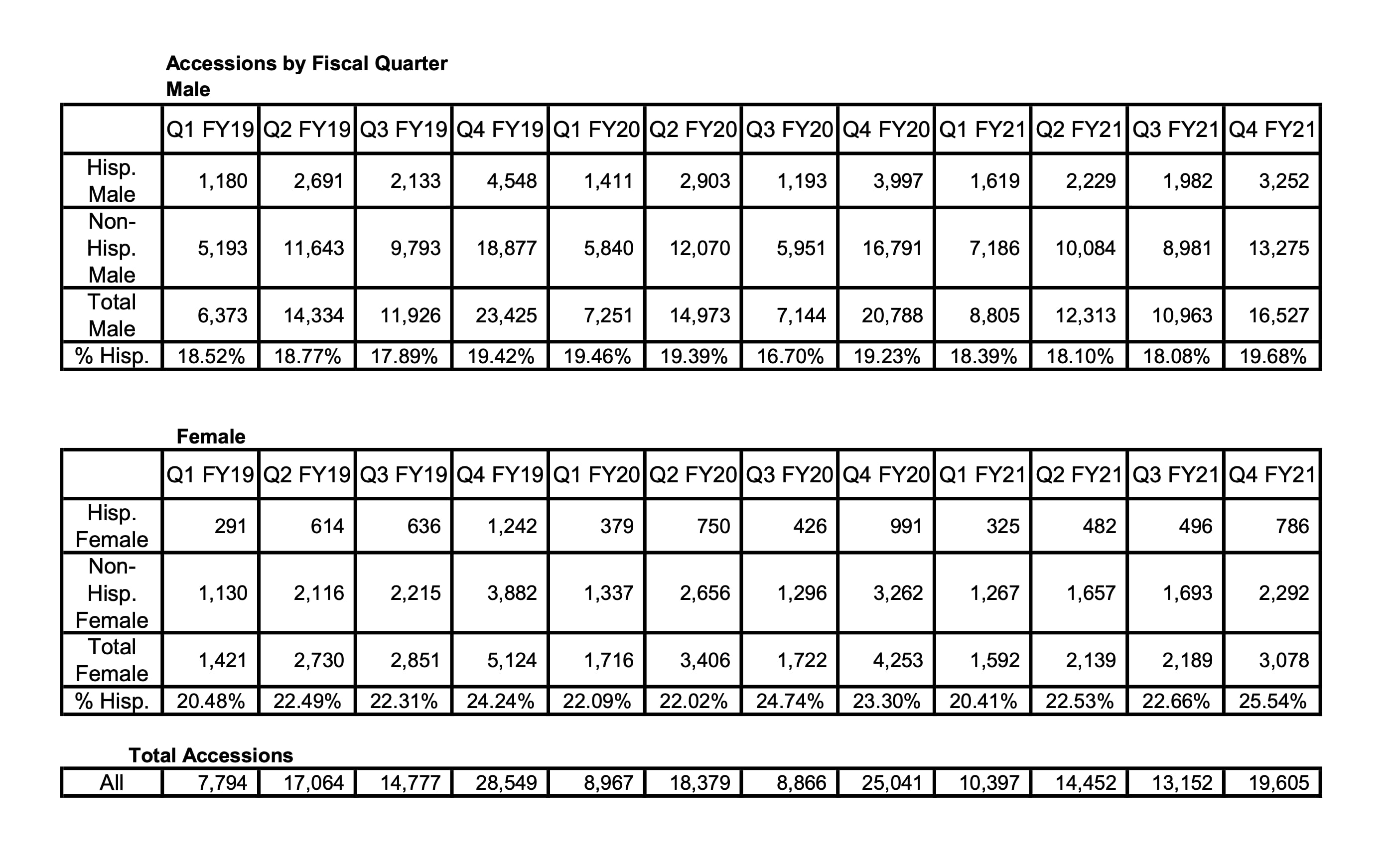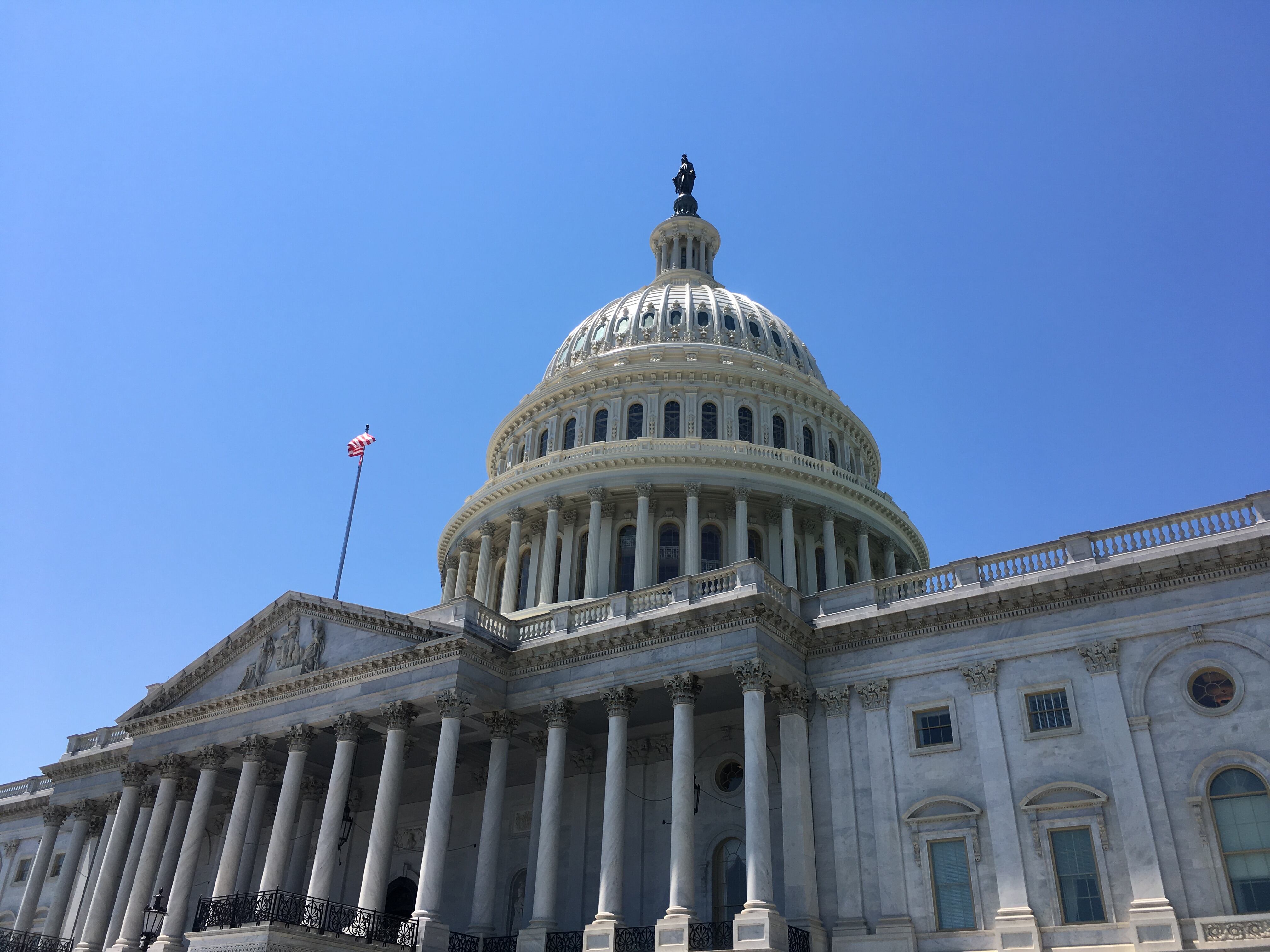Despite high-profile calls for young Hispanic men and women to stop joining the Army in the chaos following Spc. Vanessa Guillén’s disappearance last year, the Army’s recruiting machine kept rolling along with virtually no impact to how many Hispanic recruits joined the service, according to accessions data the Army provided to Army Times upon request.
In the fourth quarter of fiscal 2021, in fact, Hispanic men and women made up a greater percentage of their respective gender’s overall ethnic makeup among new soldiers than in any other quarter evaluated in three years.
Guillén’s disappearance and murder at the hands of a fellow soldier — and the Army’s handling of the case — led to public outcry and protests, including marches that called for people of color to boycott enlisting in the military.

One leading Latino civil rights group, the League of United Latin American Citizens, made public calls for such a boycott in July 2020, shortly after the service found the soldier’s remains in a shallow grave near the Texas post.
LULAC later participated in policy discussions with senior Army officials and released a statement praising the Army’s decision to discipline leaders and implement reforms following the report of the Fort Hood Independent Review Committee.
The organization did not immediately respond to a request for comment for this story that Army Times made through its website.
The data, provided by Army spokesperson Matt Leonard shows that the proportion of Hispanic recruits among Army accessions did not meaningfully decrease in the wake of the Fort Hood scandal.

“The table illustrates that the quarter-to-quarter accessions numbers remained consistent by year, with the exception occurring during the COVID pause [on basic training classes] of third quarter [of] fiscal year 2020,” Leonard explained.
That third quarter saw nearly 10,000 fewer recruits across all demographics ship to training than the previous quarter.
Even the two quarters immediately following the identification of Guillén’s remains in July 2020 — the fourth quarter of fiscal 2020 and the first quarter of fiscal 2021, or July through December 2020 — saw only a marginal decrease in the proportion of Hispanic accessions compared to the second quarter of fiscal 2020.
And although accessions may be a lagging indicator of recruitment contracts signed, the proportion of Hispanic accessions has continued to rise.
The fourth quarter of fiscal 2021 — July through September — saw the highest quarterly proportion of Hispanic accessions for both genders out of the three fiscal years evaluated.
Davis Winkie covers the Army for Military Times. He studied history at Vanderbilt and UNC-Chapel Hill, and served five years in the Army Guard. His investigations earned the Society of Professional Journalists' 2023 Sunshine Award and consecutive Military Reporters and Editors honors, among others. Davis was also a 2022 Livingston Awards finalist.





